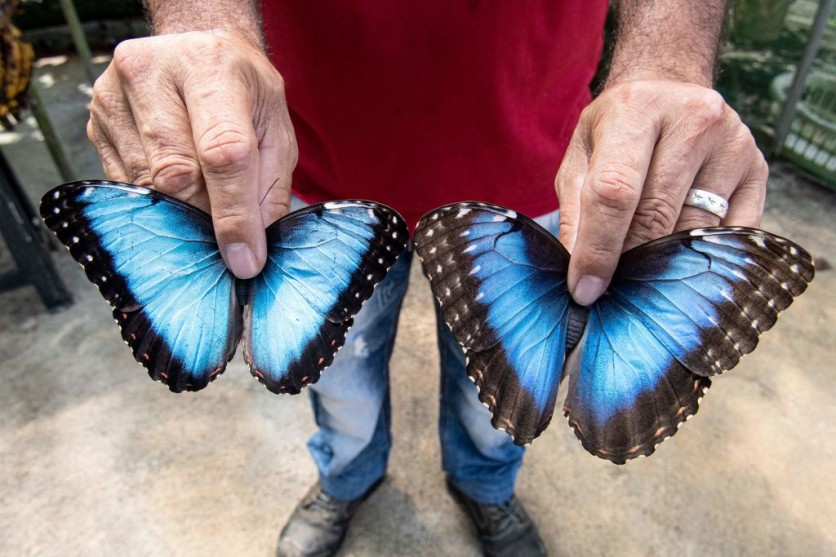Butterflies take flight as researchers create the world's lightest paint!
University of Central Florida researcher Debashis Chanda has developed the world's lightest paint, inspired by butterflies.

As a professor in UCF's NanoScience Technology Center, Chanda wanted to create an alternative to pigment-based colorants that would be more environmentally friendly and contribute to energy-saving efforts.
Pigment-based colors require new molecules for every color present, whereas structural colorants control the way light is reflected, scattered, or absorbed based on the geometrical arrangement of nanostructures.
Hence, Chanda's research group developed a plasmonic paint that utilizes nanoscale structural arrangement of colorless materials, aluminum and aluminum oxide, instead of pigments to create colors.
Long-lasting Paints of All Colors
The paint's structural color flakes were combined with a commercial binder to form long-lasting paints of all colors. This combination allows the paint to reflect the entire infrared spectrum, which results in the underneath surface staying 25 to 30 degrees Fahrenheit cooler than if it were covered with standard commercial paint.
This temperature difference could lead to significant energy savings and a reduction in carbon dioxide emissions.
In addition to being environmentally friendly, plasmonic paint is also extremely lightweight. The paint's large area-to-thickness ratio allows full coloration at a paint thickness of only 150 nanometers, making it the lightest paint in the world.
Only about three pounds of plasmonic paint could cover a Boeing 747, which normally requires more than 1,000 pounds of conventional paint.
Chanda's interest in structural color stems from the vibrancy of butterflies. He says, "As a kid, I always wanted to build a butterfly. Color draws my interest."
Chanda's research has allowed him to draw inspiration from the natural world to create a product that is beneficial for the environment and energy-saving efforts.
Potential Energy Savings
The potential energy savings that could result from the use of plasmonic paint are significant. Over 10% of total electricity in the US goes toward air conditioner usage, and the temperature difference plasmonic paint promises could help reduce this usage.
Additionally, plasmonic paint could help reduce carbon dioxide emissions, leading to a reduction in global warming.
Chanda's plasmonic paint is still in the research phase, and the next steps of the project include further exploration of the paint's energy-saving aspects to improve its viability as commercial paint.
Chanda says, "We need to bring something different like non-toxicity, cooling effect, ultralight weight, to the table that other conventional paints can't."
In sum, Chanda's innovation in plasmonic paint has led to the development of the world's lightest paint. Inspired by butterflies, this paint is environmentally friendly, energy-saving, and cost-effective.
The potential energy savings and reduction in carbon dioxide emissions make it an attractive option for commercial use.
The work's findings were published in Science Advances.
Related Article : Apple to Settle Macbook 2015-2019 Butterfly Keyboard Lawsuit-How to Get as Much as $395

ⓒ 2025 TECHTIMES.com All rights reserved. Do not reproduce without permission.




